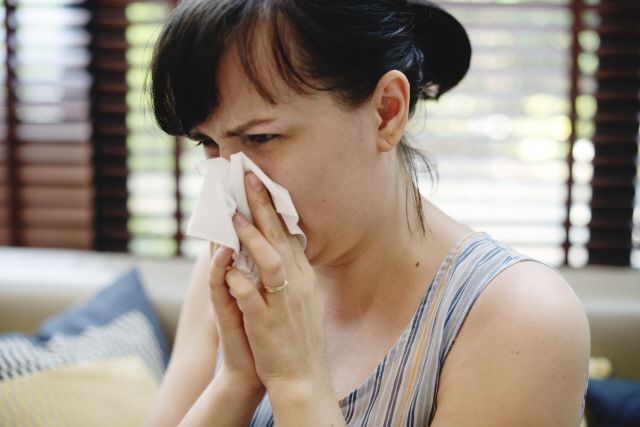
The Herb Can Treat Various Respiratory Symptoms and Mild Edema
By Daniel Cho L.A.c (c0454445@gmail.com)
Ting Li: Symptom Indicator Score ++, Frequency of Use +, Main Symptoms
①We can consider using Ting Li (mostly Ting Li Da Zao Xie Fei Tang) after ruling out Ma Huang and Xi Xin for clear, watery nasal discharge, phlegm, and other respiratory symptoms such as coughing, stuffy nose, sneezing, wheezing and shortness of breath that are triggered/aggravated by cold stimulus ②Shortness of breath is common.
Possible Symptoms ③Mild edema
- Pharmacological Hypothesis of Ting Li
Noncardiogenic pulmonary edema: fluid accumulation in mesopulmonum and pulmonary alveoli.
▷Respiratory symptoms include shortness of breath, coughing, sneezing, phlegm, nasal discharge, and nasal congestion due to fluid accumulation in the respiratory tract and lungs. → Coughing, shortness of breath, phlegm, clear nasal discharge, and nasal congestion.
▷ Localized edema due to water retention in the thoracic cavity. → Edema.
Ting Li’s symptoms may be explained as symptoms of noncardiogenic pulmonary edema. Pulmonary edema can be divided into cardiogenic/noncardiogenic pulmonary edemas. Symptoms of cardiogenic pulmonary edema are similar to the symptoms of Fang Ji.
Pulmonary edema is caused by excessive accumulation of fluids in the mesopulmonum and pulmonary alveoli of the lungs, resulting in breathing difficulties.
Noncardiogenic pulmonary edema is induced by changes in capillary permeability due to a direct or an indirect pathologic cause, while cardiogenic pulmonary edema occurs due to increased capillary hydrostatic pressure secondary to elevated pulmonary venous pressure. Major causes of noncardiogenic pulmonary edema are drowning, fluid overload, aspiration, inhalation injury, neurogenic pulmonary edema, acute kidney disease, allergic reaction, and adult respiratory distress syndrome.
- Clinical Signs of Ting Li
In Shang Han Lun and Jin Kui Yao Lue, Ting Li is mainly used as Ting Li Da Zao Xie Fei Tang. Other Ting Li formulas such as Da Xian Xiong Wan, Ji Jiao Li Huang Wan, and Mu Li Ze Xie San, are rarely used. Even Ting Li Da Zao Xie Fei Tang is not a commonly used formula. Therefore, we study Ting Li to understand and properly use Ting Li Da Zao Xie Fei Tang.
▷Main Symptoms: We can consider using Ting Li after ruling out Ma Huang and Xi Xin when patients are present with clear, watery nasal discharge, phlegm and other respiratory symptoms such as coughing, stuffy nose, sneezing, wheezing and shortness of breath that are triggered/aggravated by cold stimulus. Ting Li Da Zao Xie Fei Tang is used. Shortness of breath is common.
When the clear, watery nasal discharge and phlegm are present in respiratory disorders, we first consider using Ma Huang, according to my protocol for respiratory disorders. If Ma Huang cannot be used, next we consider Xi Xin. We can consider Ting Li Zi if we still can’t find the right formula among Xi Xin formulas. Ting Li Da Zao Xie Fei Tang would be used in this case.
▷Clinical Expressions: ①Coughing, stuffy nose, sneezing, shortness of breath, and such accompany clear, watery nasal discharge and phlegm. ②Chronic/acute cough with clear, watery nasal discharge and phlegm. Coughs are usually wet coughs with sounds indicative of phlegm. When chronic, dry coughs without nasal discharge or phlegm may be possible. ③Whether mild or severe, shortness of breath is most common. ④Shortness of breath is often accompanied by wheezing (grunting sound in the throat) or clear, watery nasal discharge. ⑤Shortness of breath is induced by climbing stairs, walking fast, running, hiking or exercising. It can also be induced by cold stimuli such as exposure to cold wind or during the cold seasons. And it is often exacerbated by lying down and relieved in a sitting position. ⑥In some cases, secondary symptoms of chest fullness may occur due to shortness of breath.
▷Possible Symptoms: Mild edema is present sometimes. Patients say they swell easily, with puffy, swollen faces.
- DPHF Chart
▷CAPE/ Facial Color: puffy, swollen faces are common.
<Physical Symptoms>
|
Common cold: respiratory symptoms such as runny nose, phlegm, and cough |
|
|
Stool |
Constipation |
|
Chest Flank |
Shortness of breath is induced by (walking fast, running, or climbing stairs) and the degree would be (☆severe enough to cause breathing difficulties ○moderate △mild). |
|
Whole Body |
★ I swell easily (hands, feet, legs, face, whole body). My legs swell easily if I stand or walk for a long time. I have sock marks. My shoes become tighter. I can’t take off my ring in the morning. |
































